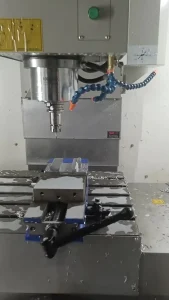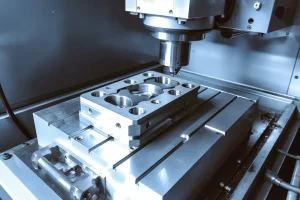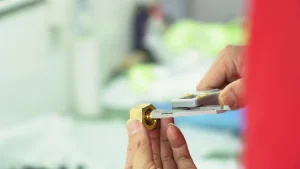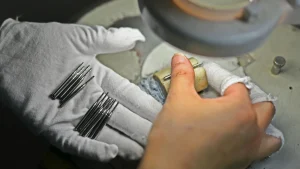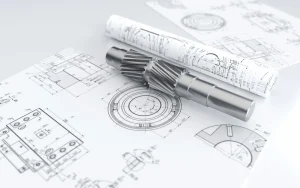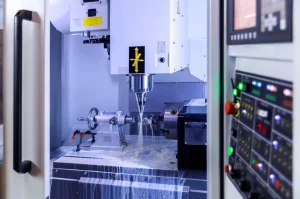In the process of stainless steel parts processing, controlling deformation is an important link, which directly affects the quality and precision of the parts. The following are some methods to control the deformation of stainless steel parts processing:
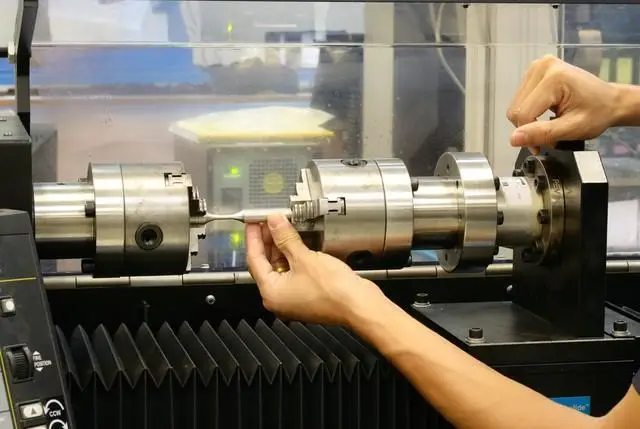
Choose the appropriate welding method and process parameters
1. Welding method:
Gas shielded welding (such as argon arc welding): This welding method has the advantages of fast welding speed and small heat-affected zone, and is suitable for welding of stainless steel parts. Compared with arc welding, it can more effectively control welding deformation.
Laser welding, resistance spot welding, etc.: These welding methods can also reduce heat input and increase welding speed, thereby controlling welding deformation.
2. Process parameters:
Parameters such as welding current, arc voltage, wire diameter, and shielding gas flow should be reasonably selected according to the material, thickness, structure and requirements of the parts. Avoid excessive welding current to cause serious deformation, and also prevent the welding current from being too small to affect the welding quality.
Optimize part structure and design
1. Reduce stiffness differences: During the design stage, the stiffness differences of parts should be minimized as much as possible, and large rigid components or thin-walled components should be avoided to reduce deformation during welding.
2. Weld layout: Try to make the weld layout symmetrical or close to the neutral axis to avoid eccentric loads, thereby reducing welding deformation.
3. Number and length of welds: Reduce the length, number and cross-sectional area of welds, avoid using continuous full welding or cross welds, and use intermittent welding or spot welding to reduce the heat affected area and deformation of welding.
Use reasonable assembly and clamping methods
1.Ensure docking accuracy: During the assembly process, the docking accuracy and clearance of parts should be guaranteed to avoid excessive assembly stress.
2.Use fixtures or positioning devices: Use appropriate fixtures or positioning devices to keep the parts stable and balanced during welding to prevent the movement or deformation of parts. The fixture or positioning device should have a certain degree of elasticity and adjustability so that it can be loosened or removed in time after welding.
Use effective preheating and post-heat treatment
1.Preheating: Preheating the parts before welding can reduce the temperature gradient during welding, thereby reducing welding deformation.
2. Post-heat treatment: Tempering after welding can eliminate welding stress and further reduce deformation.
Use effective cooling measures
1.Water cooling method:
Spray cooling method: Use water spraying on the back of the weld bead of the part to cool down, which is suitable for parts with larger areas.
Wet sand cooling method: For welds in the form of plane overlap, wet sand cooling method can be used. The parts are placed flat on wet sand so that the back of the weld is fully in contact with the wet sand for cooling.
2. Other cooling equipment: Cooling equipment such as fans and water pumps are set around the parts to use their forced heat exchange effect for cooling.
Use effective correction methods
1.Mechanical correction: Use mechanical force to stretch, compress, bend, twist and other operations on the parts to cause reverse plastic deformation, thereby correcting welding deformation.
2. Thermal correction: Use local heating or cooling to heat treat the parts to cause reverse thermal deformation. Flame correction and resistance correction are both commonly used thermal correction methods.
Other precautions
1. Welding sequence: Try to use symmetrical welding, segmented welding and other welding sequences to offset welding deformation.
2. Pre-deformation before welding: For some parts that are easy to deform, pre-deformation treatment can be performed before welding to offset deformation during welding.

